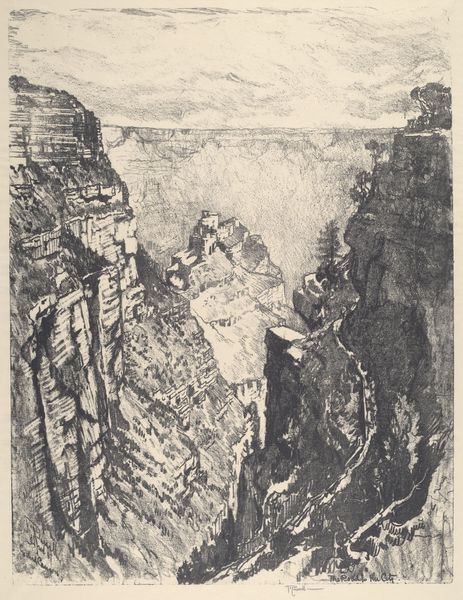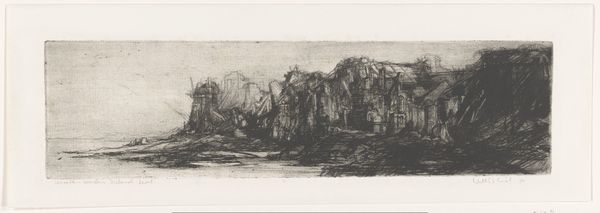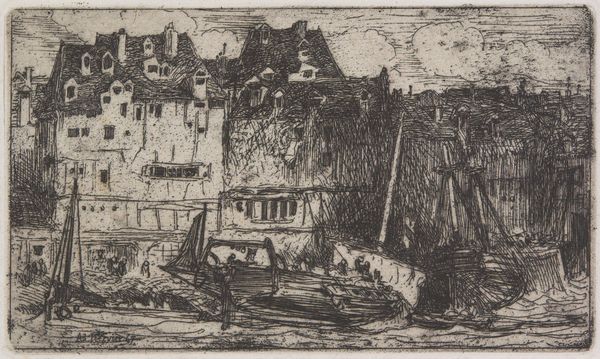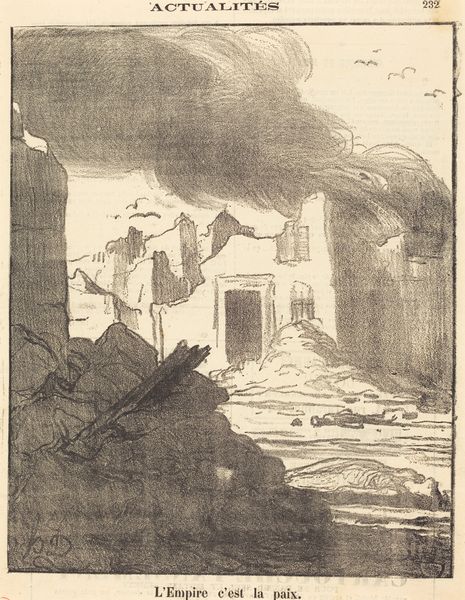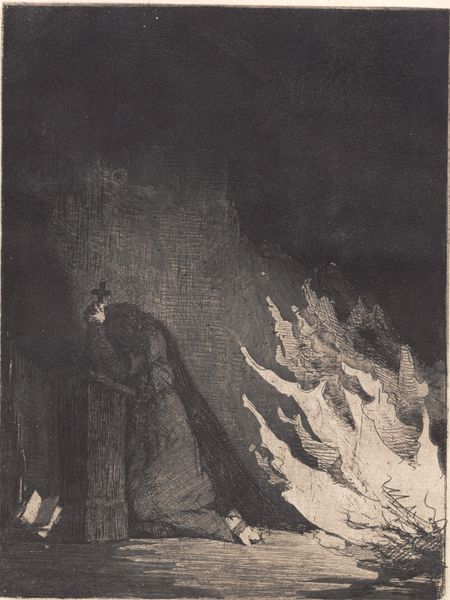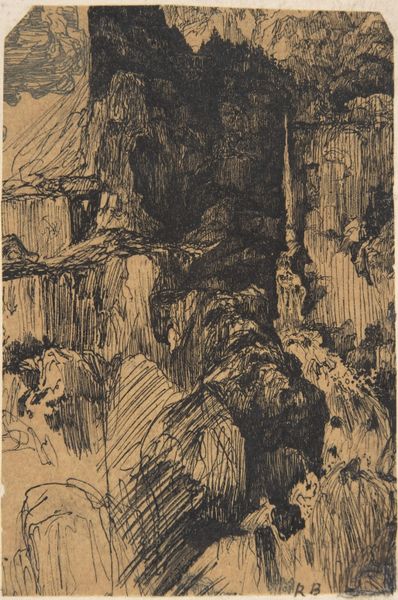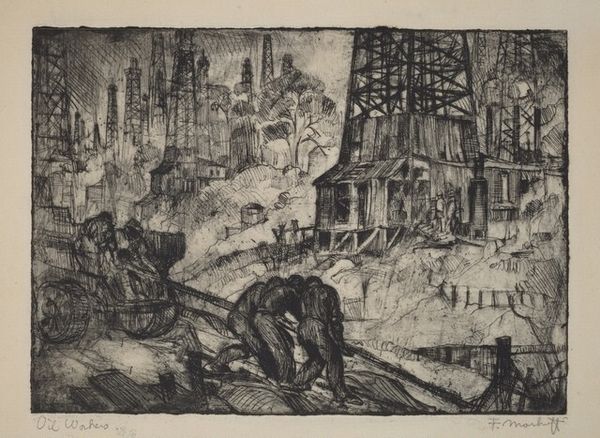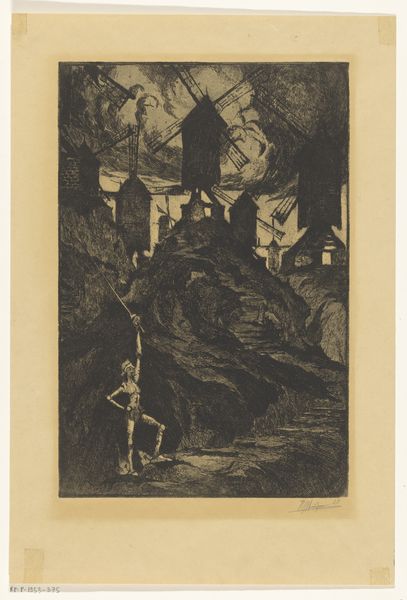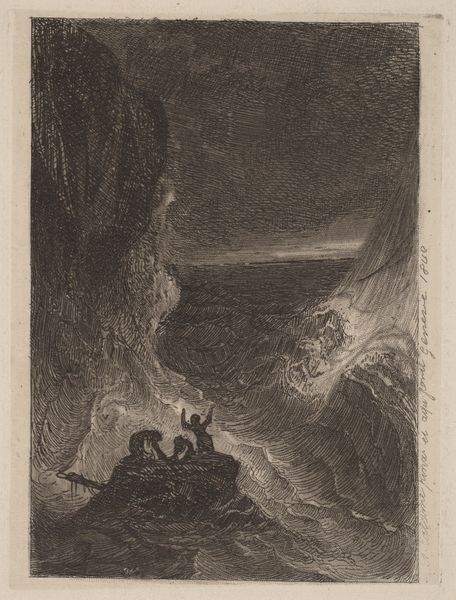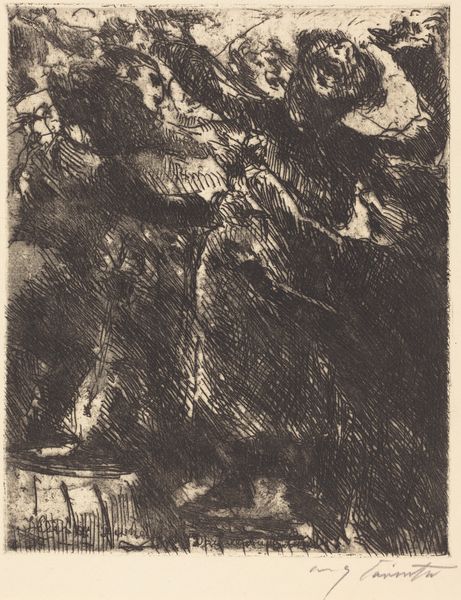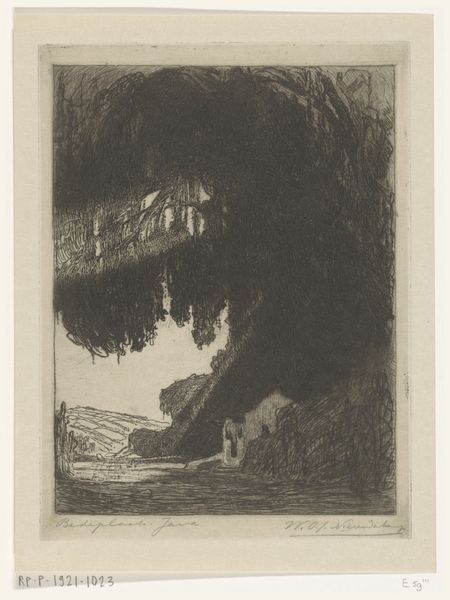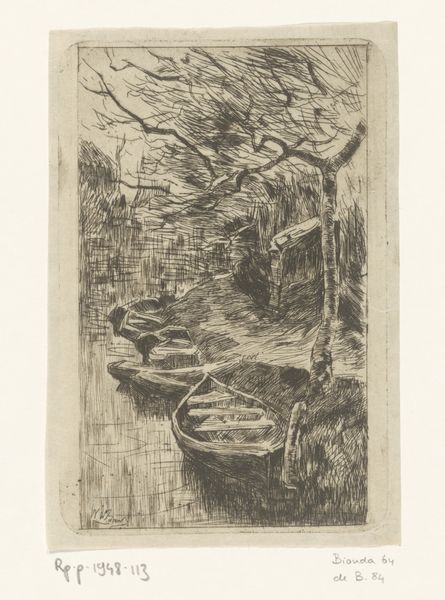
Copyright: National Gallery of Art: CC0 1.0
This is Victor Hugo’s "Landscape," an etching made in 1868. It presents a stark, high-contrast landscape dominated by shadowy forms. Hugo masterfully uses dense cross-hatching to evoke a brooding atmosphere. The composition reveals a ruined castle silhouetted against a turbulent sky. The scene’s oppressive darkness and sharp, angular lines convey a sense of desolation. Notice how Hugo’s use of perspective compresses space, heightening the drama. Hugo's artistic endeavors challenge traditional landscape painting. He wasn't merely representing nature but rather using it as a canvas to project inner emotional states. The ruined castle is not just a historical relic but a symbol of decay and perhaps the transience of human ambition. Finally, consider how the formal elements—the stark contrasts, the dynamic lines—converge to create a powerful emotional experience. This landscape invites us to contemplate the interplay between form, feeling, and the symbolic resonance of ruins.
Comments
No comments
Be the first to comment and join the conversation on the ultimate creative platform.


